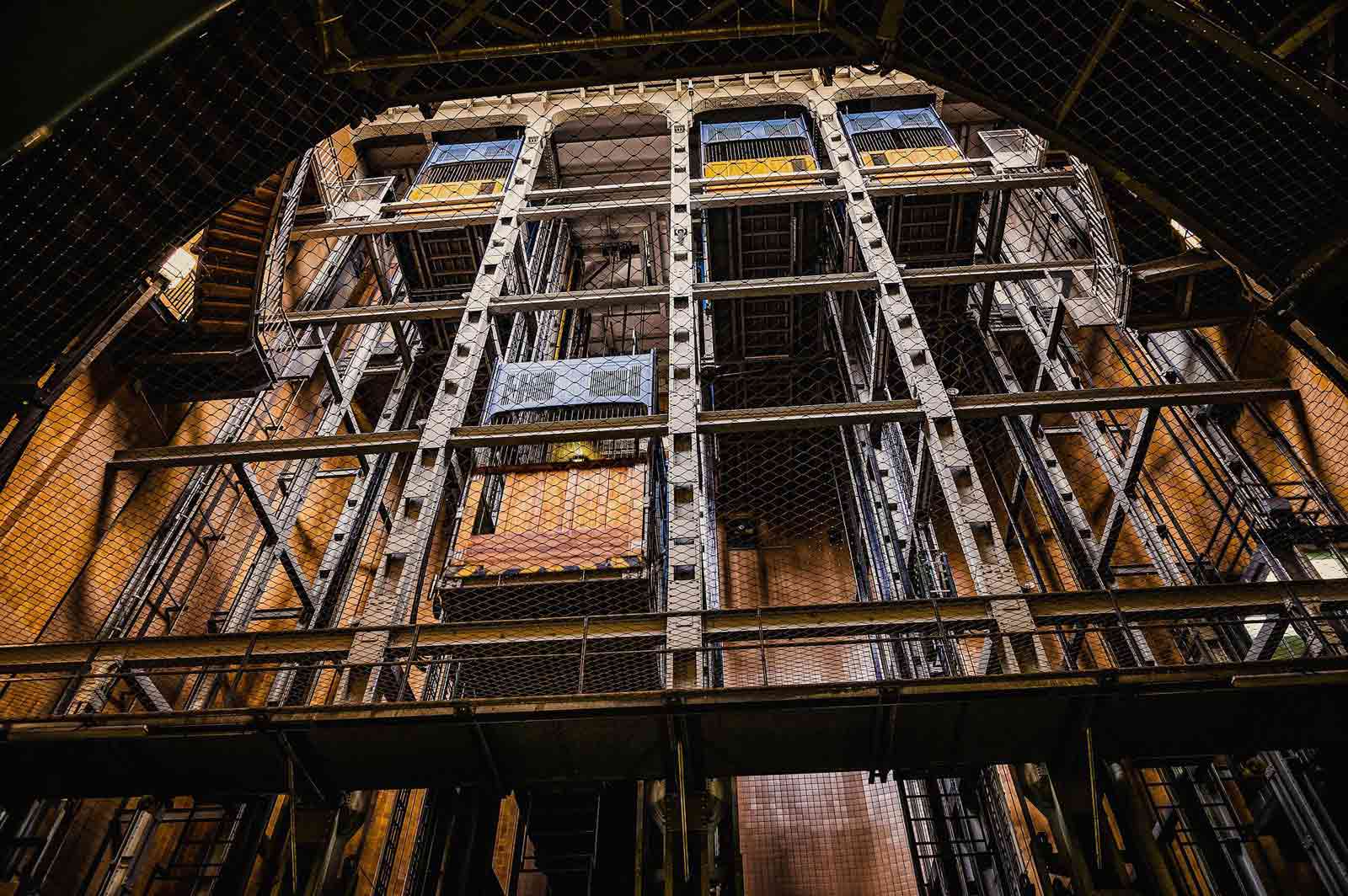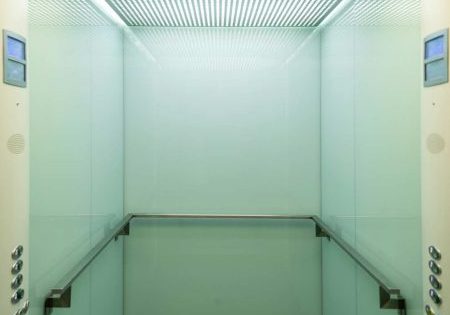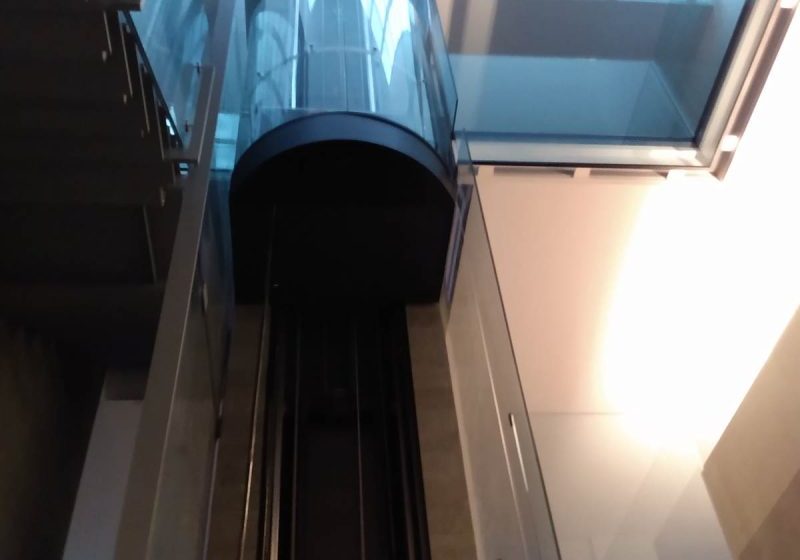The 1860s promoted a growing expansion of passenger elevator use in the U.S.
The period between 1860 and 1870 witnessed the gradual expansion of passenger elevator use in the U.S. as architects, engineers, building owners and the general public became aware of the potential of vertical-transportation (VT) systems. This increasing awareness was also actively fostered and promoted by the emerging VT industry. Although some of these events were recounted in contemporary engineering and technical journals, newspapers were the primary means by which this technology was introduced to the public. The presence of The Associated Press (founded in 1846) also meant that articles that appeared in major urban newspapers were often reprinted (in whole or in part) in numerous small-town newspapers. In addition to articles, advertisements appeared that highlighted the presence of passenger elevators in renovated and newly completed buildings.
Throughout the 1860s, articles about and advertisements for hotels were a primary means by which Americans learned about passenger elevators. In 1860, Otis Tufts completed the installation of his second screw-driven vertical railway elevator in Philadelphia’s Continental Hotel (the first had been placed in New York’s Fifth Avenue Hotel in 1859). In June 1860 the Nashville Union and American announced that a new hotel under construction was also intended to employ this system:
“(T)here will be two elevators — one on each side of the clerk’s office — to be worked by steam — on a spiral screw, similar to those of the new and magnificent Continental Hotel recently built in Philadelphia. One of these elevators is for baggage, furniture, etc., the other for persons who do not wish, or cannot go up the stairways. These elevators raise trapdoors on each floor, and they close with a spring after them, so there is no danger by them — they cannot possibly be left open. These conveniences are among the best of the late improvements in hotel buildings.”[1]
While, for unknown reasons, Tufts’ vertical railway elevators were not installed, their characterization as “among the best” of recent “improvements in hotel buildings” identifies the elevator as an important modern amenity required to enhance a guest’s experience.
Accounts of the Lindell Hotel in St. Louis, completed in December 1862, also addressed the importance of elevators for guests — and the hotel’s overall operation. When it opened, the hotel featured two elevators designed to carry baggage and service items. However, there was no passenger elevator. Plans for the correction of this deficit were announced in October 1863:
“There are two large elevators already constructed for the purpose of raising baggage, fuel from coal and wood vaults, linens from the washrooms and general house and table stores. Besides these, a large passenger elevator will soon be supplied, the sole purpose of which will be to convey guests from the ground floor, if need be, to the top of the building … Passengers can be landed quickly and conveniently at a spring doorway, which will open on a level with its stopping place at each of the six stories. A handsome boxing or casing of wood and glass will enclose it all the way up. The starting point will be in the entrance court, where guests coming in by omnibuses and carriages are alighted. The elevator is under contract, and will be completed in four or five weeks by St. Louis mechanics.”[2]
This account includes one of the first descriptions of an enclosed shaft and provides a glimpse into elevator construction with the reference to its installation by “St. Louis mechanics.”
Throughout the 1860s, articles about and advertisements for hotels were a primary means by which Americans learned about passenger elevators. In 1860, Otis Tufts completed the installation of his second screw-driven vertical railway elevator in Philadelphia’s Continental Hotel (the first had been placed in New York’s Fifth Avenue Hotel in 1859).
The fact that many elevators, such as those manufactured by Otis, were built in the eastern U.S. and shipped to distant cities for installation raises questions about the amount of oversight provided by elevator companies in these situations. The enthusiasm with which Tennessee newspapers reported on the impending arrival of the Otis elevators built for the Maxwell House hotel in Knoxville (completed in 1870) provides a glimpse into the construction process:
“The Maxwell House elevator, which is one of the finest and most expensive pieces of mechanism of the kind ever put up is this country, is finished, and is on the way to that city … It consists of an engine and safety apparatus for passenger elevator, in 15 boxes, numbered from 1 to 8 and from 12 to 18; and one baggage elevator, in 16 boxes, numbered from 1 to 16 inclusive. The number of the passenger engine is 197, and the freight engine 219, the entire arrangement weighing 30,760 pounds. The elevators and fixtures were shipped by the Virginia and Tennessee Railroad, via Norfolk.”[3]
This account prompts several questions: why were boxes nine and 10 not included in the passenger elevator shipment (which was presumably complete), how were the elevator components divided among the various boxes and, perhaps most importantly, what instructions were included for their assembly (in the possible event of no Otis personnel on-site)? What is known is that the elevators were shipped on July 14 and that the passenger elevator was placed into service on September 10, 1870, operating during the afternoon and evening hours: “Not less than 700 people rode in it during this time … (and) on the whole, the elevator is regarded as a success.”[4]
The year prior to the installation of the Maxwell House elevator, Otis had received similar praise from newspapers in Louisville, Kentucky, which reported on the elevator installed in the new Galt House hotel. In an article titled “Vertical Navigation,” the Louisville Courier-Journal provided its readers with a detailed description of every aspect of the system, including the steam engine, safeties and car. The article introduced its topic by characterizing the elevator as a “great achievement in practical science,” noting that:
“Probably no other adjunct of the hotel has a more decided bearing upon the convenience and pleasure of the guests. It effectively disposes of all the fatigue and trouble of getting up and down long flights of stairs, and brings the several floors of the hotel to a common level … reducing the transit from street floor to attic, and vice versa, to a species of recreation at once safe and enjoyable … Since the opening of the Galt this elevator has been in constant use. Not only has it given the greatest satisfaction to everybody, but it has proven indispensable.”[5]
The description of the car included details of its placement in the hotel and the elevator’s operation:
“The car will accommodate about fifteen persons at a time. The vertical distance it has to traverse, from first to upper floor, is about seventy feet, which is accomplished in from half to three-fourths of a minute … On each floor is an entrance to the car, consisting of a sliding and self-locking wire lattice door. At each side of this door, and within a little recess, is a cushion seat for the convenience of those in waiting for the ascent or descent of the car … There is also, at the side of each door, a bell-pull by which anyone can ring for the operator to stop the car … The interior of the car is an elegant saloon … On three sides are cushion seats, upholstered in the finest style. The body of the car is of walnut, bird’s eye and curled maple, beautifully stained and polished, with panels tastefully ornamented in gilt, and moldings and carvings overhead elaborately designed and finished. A superfine Brussels carpet covers the floor, two large mirrors are placed vis-à-vis, reflecting the interior scene back and forth with charming effect; and at night two large and richly figured chandeliers diffuse a flood of soft and beauteous light over the midair palace and its occupants.”[5]
The article also reported that the use of elevators, such as the one in the Galt House, was rapidly expanding to include other commercial building types: “Already these appliances, which are money-saving, time-saving and labor-saving, are being introduced into the larger wholesale houses in Louisville; and we presume that few such buildings will ever be erected without the elevator.”[5]
This account prompts several questions: why were boxes nine and 10 not included in the passenger elevator shipment (which was presumably complete), how were the elevator components divided among the various boxes and, perhaps most importantly, what instructions were included for their assembly (in the possible event of no Otis personnel on site)?
In fact, by 1870 an increasing number of articles about and advertisements for office and retail buildings included references to elevators provided for the use of tenants and customers. A typical account, published in January 1870, described the decision to include an elevator in the new Sears Building in Boston (which had a basement and five above-grade floors):
“These six stories are brought into easy connection with each other by means of a passenger elevator in the center of the building, which is, we believe, the first which has ever been applied to any mercantile building. The owners regarded its introduction as an experiment, in view of the doubts freely expressed whether anybody in a hurry to get from the bottom of the building to the top would wait half a minute at the foot of an elevator shaft for the car to descend to take them in. We believe that the owners and tenants are now, after a three-month’s trial, equally satisfied that an elevator, which is at once speedy and safe, is a most useful complement to a high staircase.”[6]
In fact, by 1870 an increasing number of articles about and advertisements for office and retail buildings included references to elevators provided for the use of tenants and customers.
The possibilities offered by the widespread use of passenger elevators were also addressed in a contemporary New York Evening Post article on “the new way of getting upstairs”:
“A new order of things has come about. Now the top story is the most desirable. The view from the windows, the pure air of heaven, the distance from the noise and confusion — these and many other attractions render these elevated regions the choicest of all … Now is the opportunity for some enterprising New Englander to buy a lot twenty by fifty and put up a building on it as high Trinity Church steeple, with a line of steam elevators running every five minutes. Thirty floors, with two rooms on each floor, will be about the available office space of the structure; and the proprietor might rent out the roof either for an observatory, a shot tower, or a light house, as best accorded with his fancy. One single manufacturer of steam elevators has erected over one thousand of them. They are now being introduced into almost every branch of business. People are forgetting the old prejudices … and the time is not distant when the question will be ‘How high up can you let an office?’ instead of ‘How low down?’”[7]
The 1860s witnessed the growing acceptance of the passenger elevator and the development of an optimistic vision of what its widespread use would mean for the future of architecture, cities and building users.
However, while this sense of optimism would primarily prevail during the remainder of the 19th century, signs of opposition began to emerge as early as the start of the passenger elevator’s second decade. In 1871 an editorial in the Philadelphia Inquirer questioned whether future cities would, in fact, be made better:
“The elevator, no doubt, is an important adjunct, and the use of that machine, under proper regulations, is as safe as any other appliance that has been devised. But it may be possible that such a convenience will have its disadvantages. What is to be the result of erecting towering buildings in some parts of the city, which, upon small streets, shut out the light from the lower stories and [impede] the free progress of air? As the first stories must be the most important for use in business, so they ought to be the most comfortable, and they should be easy of access. But under the new dispensation they will be dark, badly ventilated, unpleasant, and, perhaps, unhealthy. The upper stories will have the principal benefit of the light and air, and even with the assistance of the elevator in constant motion it will require a very great change in the habits of our people to induce them to patronize establishments which demand that they shall undergo so much discomfort for the benefit of the persons who own or occupy towering buildings.”[8]
This warning was, of course, to go ignored until the early 20th century when the first zoning laws were enacted that attempted to ensure that city dwellers had some guarantee of reasonable access to adequate light and air. However, its appearance serves as a reminder that thoughtful observers of new technologies and their possible consequences have existed throughout history; and it serves as a reminder that the history of the passenger elevator is more complex than is sometimes imagined.
References
[1] “The New Hotel,” Nashville Union and American, June 9, 1860, p. 3.
[2] “Lindell Hotel of St. Louis,” St. Louis Daily Missouri Republican, October 11, 1863, p. 3.
[3] “Maxwell House Elevator,” Knoxville Daily Press and Herald, July 31, 1870, p. 4.
[4] “The Maxwell House Elevator,” Nashville Republican Banner, September 11, 1870, p. 4.
[5] “Vertical Navigation,” Yonkers Statesman, May 13, 1869, p. 1. (Reprinted from the Louisville Courier-Journal, April 20, 1870)
[6] “The Building of the Year,” Boston Evening Transcript, January 1, 1870, p. 5.
[7] “The New Way of Getting Upstairs,” Rutland Independent (Vermont), June 11, 1870, p. 7. (Reprinted from the New York Evening Post.)
[8] “Tall Houses,” Philadelphia Inquirer, August 24, 1871, p. 4.
Get more of Elevator World. Sign up for our free e-newsletter.










